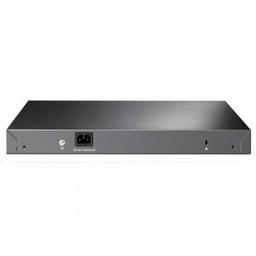Express Shipping
out of 5 stars
Key Features
- Ports
- 24 × 10/100/1000Mbps RJ45 Ports, 4× Gigabit SFP Slots, 1× RJ45 Console Port, 1× Micro-USB Console Port
- Fan Quantity
- 2
- Mounting
- Rack Mountable
- Switching Capacity
- 56 Gbps
- Packet Forwarding Rate
- 41.66 Mpps
- Packet Buffer Memory
- 4.1 Mbit
- Power Supply
- 100-240 V AC~50/60 Hz
Specifications
Q&A
Warranty
wholesale buying guide
General
- Ports
- 24 × 10/100/1000Mbps RJ45 Ports, 4× Gigabit SFP Slots, 1× RJ45 Console Port, 1× Micro-USB Console Port
- Fan Quantity
- 2
- Mounting
- Rack Mountable
- Switching Capacity
- 56 Gbps
- Packet Forwarding Rate
- 41.66 Mpps
- Packet Buffer Memory
- 4.1 Mbit
- Power Supply
- 100-240 V AC~50/60 Hz
| Products |
|---|
| Choose your plan |



